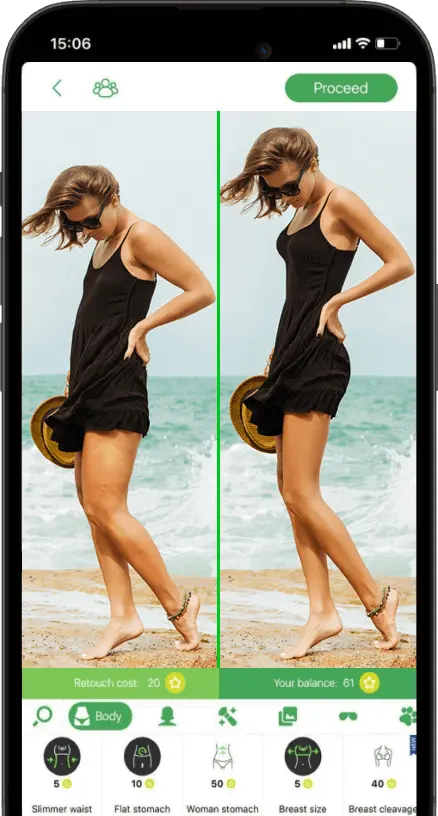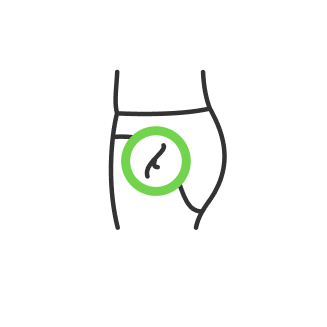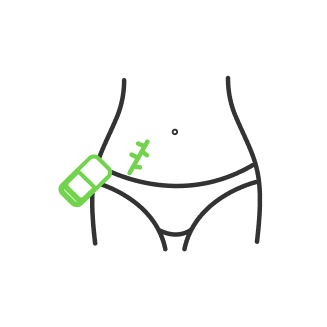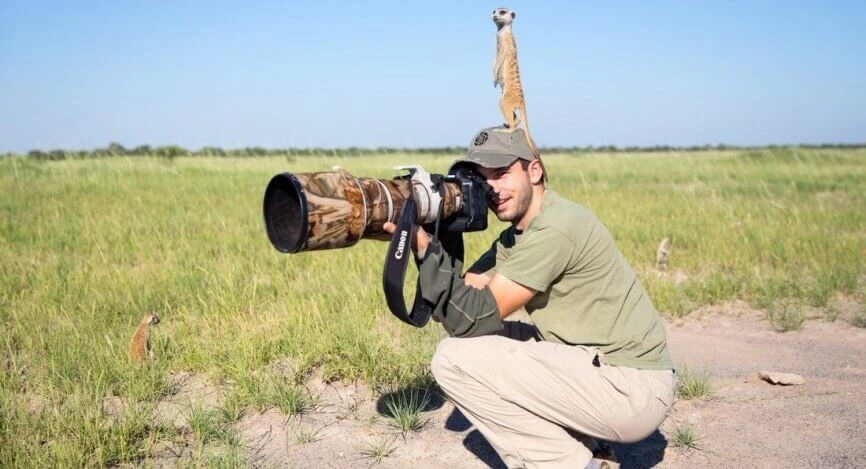The Best Camera for Beginners 2019

- The Best Camera for Beginners 2019
- Film cam
- DSLR
- Mirrorless cameras
- Point-and-shoot cam
- Bridge cams
- Best cameras for beginner photographer
- 1. Nikon D3300
- 2. Canon EOS 1300D
- 3. Sony A6400
- 4. Canon EOS 800D
- 5. Fujifilm X-T100
- 6. Panasonic Lumix ZS200 / TZ200
- 7. Olympus OM-D E-M10 Mk III
- 8. Fujifilm X100F
- How to choose a camera for beginners?
The Best Camera for Beginners 2019
What should be the first step to make, when choosing a new profession of a photographer? Obviously camera choice. It seems simple and easy, but in fact, not everyone can make his mind on the best option. When you are only starting your path on a way to success, you need a good assistant. The entry-level device must be comfortable and intuitive. It will help you to grow up a permit camera of a more professional level.
Nowadays most smartphones include cameras of good quality. It happens that most users avoid purchasing complex expensive items, using their phones. It is comfortable and inspiring when you do not extra expenses to start a new career. Still, there are always some limits, caused by the multifunctionality of smartphones. That is why, having proved your abilities with a phone camera, it is a good idea to move on to a more specialized item.
Let us take a look at various models and brands, including their types and characteristics. Modern technology permits to control every shot with automatic modes. This option is convenient for newbies. There will be no need to attend photographic classes and learn new science of capturing pictures with the best composition, light, exposure, ISO or shutter speed.
Modern technologies tend to persuade consumers that their products become smarter faster and better than older models. It is not true, because the new generation does not always mean the best ideas.
Let us compose a list of advantages and disadvantages, using classic filters as possibilities for a photographer (PP), gadget condivision (GC), quality of a picture (QP), comfort (C), weight (W), price (P), availability (A).

Film cam
There is none who tells to buy a digital device instead of using a vintage and more sensible approach with a film option. It is considered an artistic tool to use when it comes to a deep meaning of photography art. An analog film camera is immortal in its classic approach to shooting. It becomes easier to see details and feel the mood with this device. It does not matter if you are an amateur or an expert, the film is always a good way to demonstrate your skills. Such a camera seems to be old and out of trend, but they can include general characteristics of every modern digital device. Its value is a basic lesson for beginners who want to understand the beauty of this art.
Advantages
- PP: The film is not limitless. That is why a photographer has to think even three times not just twice, which picture to capture. Control composition, display, and resolution without thinking that it will be done electronically. Such a thinking process creates better images with a deeper meaning.
- P: It is one of the most easily purchased gadgets nowadays. It can be found in every store and costs not more than the simplest smartphone.
Disadvantages
- P and A: It does not cost much to purchase the analog camera, but if you want to develop your shots for some period of time, then prepare for expenses. Not every studio has the possibility to print pictures and developing as well. Consider this fact.
- C: There is no way to exchange with tools and accessories as well as photos from your gadget. Old school work means a vintage approach to results.
- Time: forget about immediate retouching or canceling wrong shots. This camera gives the possibility to capture without knowing which results you obtain. The modern world sometimes is too fast to permit this time laps to practice on film.

DSLR
When someone wants to transform himself into a professional photographer, DSLR becomes his first camera. There are no strict rules on this or that choice. It is just a common way to think of stepping up from a smartphone in a good digital camera for beginners.
Advantages
- QP: your will guarantee the best shots only obtaining the best lens for you digital friend. BUy as many as you will need in your work. Because the more you have the bigger is the range of pictures to try and practice. Play with macro and fisheye if you feel to be more than an ordinary portrait maker.
- PP: The number of accessories and options to improve and upgrade the DSLR is impressive. Just take your time and explore feedback and comments on every option to purchase.
- GC: There is no need to worry about the absence of this or that lens. If you a member of even a small society of photographers than you will be able to borrow accessory to use. Because this camera has the same elements for the same type of DSLR.
Disadvantages
- C: When one buys a camera he wants to start using it immediately. But in this case, you will need to buy spare parts separately and bring them with you all the time.
- A: This is probably the photo choice for someone who knows how to use gadgets with multiple buttons. Because DSLR is full of them all over the device. And sometimes it makes a great impression on newbies, which immediately refuse to buy it.
- W: It is considered one of the heaviest devices to capture images, especially if you have used only a smartphone for shooting. If you are accustomed to shooting with your smartphone, the DSLR’s size and weight will be shocking. Carrying it around everywhere might become tiresome.
- P: It costs more than usual phone owners can imagine. That is why think in advance about such an investment before it is too late.

Mirrorless cameras
These devices have appeared long before the classic DSLR. But newer models with more functions and possibilities are only starting to conquer the market. Because there are many reasons to switch to a digital mirrorless option. Talking about the main reason is the total absence of the mirror itself which is used in DSLR. Its aim is a reflection of the image, but with its absence, the work is done by the electronic viewfinder. It also abandons the need to look through the lens. The device is making everything by itself.
Advantages
- QP: You will definitely gain in quality, comparing to phone options. Buy numerous lens which permits to capture landscapes and portrait in any conditions.
- PP: Enjoy choosing elements to add to your gadget in all photo shops you are able to find. The choice has the only price and imagination limits.
- GC: The same story as for DSLR, when every owner of this model can share with you its equipment and accessories.
- W: It is more compact and comfortable to take with you even when you go for a walk.
- An electronic viewfinder is a perfect choice for artistic projects because composition on a screen is better than in a small viewfinder of a classic model with a mirror.
Disadvantages
- C: Being an advantage number of accessories can become an obstacle on the way to facilitate the process.
- A: It is not a simple smartphone, so keep it in mind before purchasing it. It is a smaller device, that is why its battery will not impress with its durability. Be aware to buy a charger or extra battery to keep with you when working.
- New look: The advantage of the absent mirror sometimes makes other refuse from buying this model. Because the optical view is considered the best by some photographers.
- W: The size can be different, depending on the model. Sometimes even equal to DSLR. It may play an important role when choosing a good beginner camera.
- P: Prepare to discover that this newer and lighter model can become much heavier for your budget than a simpler device.

Point-and-shoot cam
Unfortunately, the point-and-shoot market is ruined by modern phones and tablets which guarantee better images. But even the simplest camera of this type can create a better shot than a modern smartphone. Those machines are small enough to be with you on a trip or walk, fitting perfectly the pocket. There is no need for accessories or extra lens to capture the moment you face. All classic functions permit to take photos of great quality with different focal lengths and zoom. Keep in mind its pros and cons.
Advantages
- QP: It is not a secret that this small and comfortable device includes huge possibilities to compete with heavier cameras.
- W: Small and tiny if you want. Fits a purse or pocket, always easy to bring with you.
- GC: It is already complete when you buy it. No need to look extra lens or accessory to rent or share.
Disadvantages
- QP: The resolution is an issue in this case when you need to print out some pictures. Because sensors are small enough and do not permit to capture photos in low light.
- C: It is an easy device to shoot everywhere and everything. That is why usually and autofocus is used, as well as other settings. There is almost no way to find an option that gives manual control over. And its speed is far away from modern DSLR.

Bridge cams
If you are looking for a simple version, but want to be sure to have an assistant, then this is the right choice. Because bridge gadgets can provide both manual control or automatic mode for every type of photography. You are the one to decide which mode to switch and when. There are also options to have a semi-automatic mode. Apart such possibility its zoom can be transformed from portrait to landscape, from macro to eyefish, from telescope to panorama.
Advantages
- QP: Comparatively small sensor permit capturing great pictures from various angles.
- A: Enormous possibilities for macro and wide-angle shooting. You can both choose the mode of filming. No extra lens is required because the tiny camera is complete and ready for use immediately.
- W: Keep it in mind for its comfortable format and low weight.
- PP: It is obviously convenient to pay less for a great chance to shoot wide-angle pictures. It does not lower the quality of photos wherever you capture.
Disadvantages
- QP: When you need to print out several shots, it is not recommended, due to its low resolution for big formats.
- A: Even without autofocus there is no big choice of settings to apply in this or that conditions. It is a simple device and its limits are demonstrated by its menu.
- W: It is a good camera for a beginner photographer, but when you zoom in, it may exceed the size of DSLR.

Best cameras for beginner photographer
Now, when we have studied camera types, it is time to move further. There are no common rules to influence the decision of buying a DSLR. A huge number of reasons can be listed if one wants to fulfill his life with photography. And if the idea about general features is already clear, then the model and brand can scare every newbie. Because most models offer a variety of functions that look absolutely identical between each other. All modern devices can know how to correct light, shoot portraits or sports events. Moreover, even phones can cope with such a task.
Remember 4 key reasons to come up with a more upgrade picture-making option:
- A separate battery. You will not be left without connection, in case when we are making pics and videos with a smartphone.
- Real optical zoom. In smartphones, it is still rare, and it is very important.
- Better picture quality. If you look at images on a screen, there will be no difference with the smartphone. But as soon as it comes to enlargement or printing, photos will be much better.
- More comfortable to hold and set up. Cameras are great in a hand, advanced models have many buttons that easily and quickly adjust shooting settings.
That is why let us look at our list of options for the best camera for amateur photography.

1. Nikon D3300
One of the really good models in this segment. It weighs only a little more than 400 gm, so it will not scare away the not-trained hand of a beginner. Its APS-C sensor has 24.2 MP, which may seem a bit much for such a matrix, but it shoots pretty well up to ISO 12800, which is a good indicator. It is important to mention some drawbacks as well. The screen does not rotate and has not touch reaction. Nikon D3300 can be connected via Wi-Fi to your phone or computer, but you will have to buy a separate module for this.

2. Canon EOS 1300D
Canon EOS 1300D is a recent model, and at the same time not excessively expensive. However, it already has modern features, like Wi-Fi and even NFC, to create a quick connection with a smartphone. There are also a feature that is missing. The touch screen and ability to rotate it, which would make working in difficult conditions much more convenient. It is also not too quick in serial shooting and cannot boast of a cool matrix. There are three important advantages: it is very inexpensive, makes photos and videos better than a smartphone, and finally just gives the beginner a good idea about what an SLR camera is.

3. Sony A6400
The autofocus system algorithms have been so greatly improved that it is autofocus, and not a high shooting speed or image quality, that should be considered the main advantage of Sony A6400. The minimum focusing time is declared at a record level of 0.02 s! The A6400 was Sony's first APS-C eyes autofocus camera.
Among advantages is a rotating touch screen, slightly reduced power consumption, a greater number of autofocus points, HDR video and related HLG, HLG1-3 profiles plus existing S-Log2 and S-Log3 support.
Real-time tracking is an original artificial intelligence technology developed by Sony.
If you point the camera to the object that you want to monitor, it starts to recognize and track it using data on the color, texture, depth of field found on the image of faces and eyes.
And all this happens in real-time.

4. Canon EOS 800D
One of the best entry-level DSLRs, the EOS 800D is an update of 750D. The resolution remains the same, but it's a new design with improved ISO performance. Autofocus also got an update over the older model: now with a 45-point layout that is backed up by excellent real-time AF system. The lack of 4K video and construction is a little disappointing, but despite this, it can be almost called the best camera for a beginner.

5. Fujifilm X-T100
Immaculately turned out in a choice of black, dark silver or champagne gold, the Fujifilm X-T100 is one of Fujifilm’s latest compact system cameras. The impressive feature set includes high-resolution thrills all round, from the 24.2MP APS-C image sensor to the 1,040k 3-way tilting touchscreen and the 2,360k electronic viewfinder. There’s also 4k UHD movie capture on the menu, although it’s limited to a disappointingly slow 15fps frame rate.
Further highlights include intelligent scene analysis and intelligent hybrid AF, which combines phase-detection and contrast-detection for fast yet consistently accurate performance. The 15-45mm kit lens is also a delight, delivering very good image quality while adding optical image stabilization and power-zoom for smooth focal length transitions when shooting movies.

6. Panasonic Lumix ZS200 / TZ200
The Panasonic Lumix ZS200 / TZ200 is one of the best travel options. This is partly due to the 1.0-inch sensor, which helps the device make much better images. A 15x zoom should be more than enough for most situations, and a built-in electronic viewfinder makes it easy to compose images in natural sunlight. Recording 4K video along with Panasonic 4K Photo mode is a very useful feature for traveling.

7. Olympus OM-D E-M10 Mk III
OM-D E-M10 Mark III is not a huge upgrade compared to Mark II. However, Olympus has somewhat improved and tweaked the SLR camera to make the device even more attractive to customers. Some will criticize the smaller format of Micro Four Thirds sensors, but its impact on image quality is negligible, which means the lenses are compact and lightweight, just like the camera itself. A big advantage is a 5-axis image stabilization system, a decent electronic viewfinder, impressive shooting speed (8.6 frames per second) and video shooting in 4K.

8. Fujifilm X100F
X100F is a great thing, but certainly not for everyone. This is a relatively compact retro-style camera with a fixed focal length of 35 mm, equivalent to an f / 2.0 lens. It is designed for photographers who crave manual external control of traditional 35mm film rangefinder cameras. This is a relatively specialized camera, and most of its owners probably have other devices.
How to choose a camera for beginners?
These are the key models to consider, but before conclusion let us remember factors which affect our choice:
- Budget. The user needs to decide how much money to spend. This is a good way to evaluate what level of camera he will end up with.
- Use time. Imagine how often you plan to use the camera: daily, monthly or just a couple of times a year. If you need a camera for taking pictures on vacation, then a cheaper model can be a great option. Purchase a compact camera in the mid-price range. But if you plan to seriously engage yourself in photography, even if at an amateur level, not professionally, you will have to invest in a more serious device.
- Purpose of using the device. The gadget, which is great for portraits, will not be suitable for a camping trip. If the buyer plans to shoot only high-quality photos in a studio, then the choice should be the best amateur DSLR camera.
Do not forget about one general rule: more compact items with less removable or interchangeable parts are best for trips. Some people prefer classic options, while others use modern mirrorless devices. The former are attracted by excellent image detailing and smooth adjustment of the depth of field, while the latter are attracted by the low weight of equipment and advanced features in post-processing.
Olympus and Fujifilm system cameras are the best choice to start, Canon and Sony are used more by professionals. Larger and heavier mirror models should be purchased for those who are used to the classic layout of photographic equipment. Travelers will pay attention to ultra-compact Canon, and creative people will be interested in Nikon superzoom. Finally, for children, you can buy a Fujifilm instant print camera for sharing fun cards with friends.
He started his career as a professional photo designer and retoucher. Professional commercial photographer with 20 years of experience. He is a leading advertising photographer and has worked as a food photographer with Michelin-starred chefs. His work with models can be seen on the calendars of many leading companies in Ukraine. He was the owner of the photo studio and photo school "Happy Duck".

with RetouchMe














